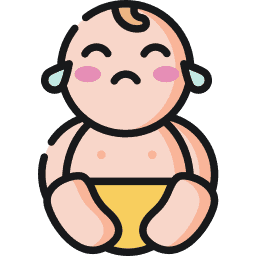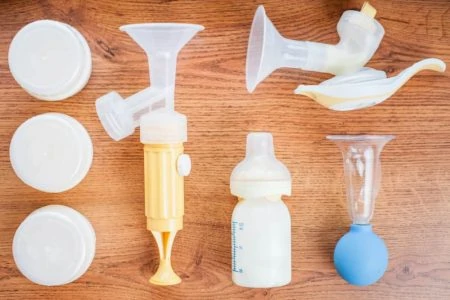You probably pictured peaceful snuggles after feeding time. Instead, you are pacing the floor with a screaming baby who cannot seem to get comfortable. It is stressful, exhausting, and heartbreaking to watch.
You are not alone in this. As parents and medical professionals, we have navigated these stormy waters ourselves. The good news is that most causes of post-feeding distress are temporary and treatable.
We will break down exactly why your baby cries after feeding, signs to watch for, and proven techniques to calm your little one.
Key Takeaways
- Common causes: Gas, acid reflux (GERD), and colic are the most frequent reasons for post-feeding tears.
- Check the latch: Swallowing excess air during feeding often leads to painful trapped gas.
- Dietary factors: Food sensitivities to dairy or soy can pass through breast milk or formula.
- Soothing techniques: Upright positioning, frequent burping, and slower nipple flow often provide relief.
Why Do Babies Cry After Feeding?
If your baby is inconsolable after eating, you need to play detective. Look for these specific signs of abdominal discomfort:
- Intense crying: This is not just a fuss; it is a cry of pain. It often happens in the evening and sounds urgent or distressed.
- Body language: Watch their legs. Is your baby pulling their knees up to their chest or stiffening their legs out straight? This usually indicates stomach pain.
- Tight belly: Gently touch their tummy. A hard, swollen, or distended belly suggests trapped gas is the culprit.
While every baby is unique, most post-feeding crying stems from a few common digestive issues. Here is what you need to know about the main causes.
1. Gas Pains
Gas is the most common reason for tears after a meal. Babies have immature digestive systems that are still learning to process food and air. If they swallow too much air while sucking, it gets trapped.
This pressure causes bloating and sharp pain. While you cannot prevent gas entirely, you can minimize it with these strategies:
- Burp frequently: Do not wait until the end of the feed. Burp your baby every few minutes or every ounce. If they do not burp, lay them down for a moment and try again.
- Keep them upright: Gravity helps digestion. Keep your baby’s head above their stomach during feeds and hold them upright for 20 to 30 minutes afterward (1).
- Bicycle legs: Lay your baby on their back and gently cycle their legs toward their tummy. This mechanical movement helps push trapped gas through the intestines.
- Intervene early: Try to calm a crying baby before feeding. Crying causes them to gulp air, which leads to more gas and more crying.
Tips for Breastfeeding Moms
If you are nursing, your technique and diet play a role in gas management:
- Check your latch: A shallow latch lets in air. Ensure your baby’s mouth covers a large portion of the areola, not just the nipple.
- Dietary audit: Foods like broccoli, beans, onions, and dairy in your diet can cause gas in your baby. Keep a food journal to spot patterns.
- Burp before switching: Always bring up a burp before offering the second breast.
Tips for Bottle Feeding
Bottle-fed babies are prone to swallowing air, but the right gear helps:
- Check nipple flow: If the milk comes out too fast, your baby will gulp it down along with air. Switch to a slow-flow nipple to pace the feed.
- Angle the bottle: Ensure the nipple is full of milk, not air pockets. Anti-colic bottles with vent systems can also reduce air intake.
2. Acid Reflux (GERD)
It is normal for babies to spit up, but if your baby screams in pain while doing it, they may have Gastroesophageal Reflux Disease (GERD). This affects up to 50% of infants (2).
In GERD, the muscle between the stomach and esophagus is weak, allowing acid to flow backward. This causes heartburn-like pain. Watch for these symptoms:
- Arching the back: Babies often arch their backs during or after feeding to try and stretch out the esophagus and relieve pain.
- Refusal to eat: Your baby might be hungry but pulls away from the bottle or breast after a few swallows because it hurts.
- Poor weight gain: Frequent vomiting can lead to a lack of calorie absorption.
Most babies outgrow reflux by their first birthday. If symptoms are severe, a pediatric gastroenterologist can help with a treatment plan or medication.
3. Colic
If your baby is healthy but cries excessively for no apparent reason, it might be colic. Doctors often use the “Rule of Three” to diagnose it: crying for at least three hours a day, three days a week, for three weeks (3).
Colic usually peaks around six weeks and often resolves by three to four months. While the exact cause is unknown, it is frequently linked to digestive sensitivity or overstimulation.
You are not doing anything wrong. Colic is exhausting, but it is not dangerous. Comfort your baby with swaddling, white noise, and motion, and remember that this phase will pass.
4. Food Sensitivities
Sometimes, proteins in breast milk or formula cause an immune response in your baby’s gut. The most common offenders are cow’s milk protein and soy.
If you are nursing, pay attention to your diet. I once discovered my youngest screamed after every evening feed; the culprit turned out to be the spicy cheese I was eating at dinner. Once I cut it out, the crying stopped.
Signs of a true food allergy include:
- Skin issues: Look for hives, eczema, or rashes.
- Digestive distress: Chronic diarrhea, mucous or blood in the stool, and vomiting.
- Respiratory issues: Wheezing or trouble breathing (call 911 immediately).
If you suspect a formula allergy, consult your pediatrician about switching to a hypoallergenic or hydrolyzed formula.
Other Reasons for Crying After Eating
Sometimes the digestive system is not the bad guy. Here are a few other reasons your baby might be upset after a meal.
5. Overtiredness
It is easy to mistake a tired cry for a hungry cry. If your baby has been awake for a while and starts crying after a feed, they might just be exhausted.
Newborns can only handle short wake windows (often 45 to 60 minutes). If they stay awake too long, they get overstimulated and struggle to settle down. If they have been fed and changed, try swaddling them and putting them down for a nap.
6. Teething
Most babies start teething between 4 and 6 months. The sucking motion increases blood flow to the gums, which can cause throbbing pain. This turns a comforting meal into a painful experience.
To help, try numbing their gums before a feed. You can rub them with a cool, damp washcloth or a clean finger dipped in cool water (4).
7. Thrush
Thrush is a yeast infection that can develop in your baby’s mouth (5). It is common after a round of antibiotics.
Look inside your baby’s mouth for creamy white patches on the gums, tongue, or cheeks that do not wipe away. Thrush can make sucking painful. If you are breastfeeding, you might also feel sharp, shooting pains in your breast.
Thrush requires a prescription antifungal medication for both baby and mom to prevent passing it back and forth. You must also sterilize all pacifiers and bottle nipples.














